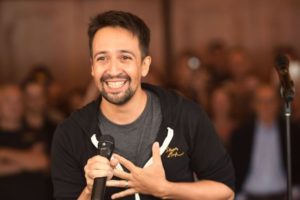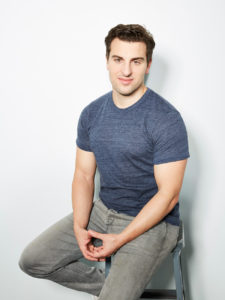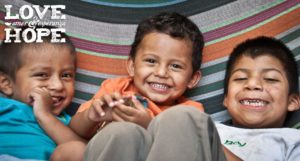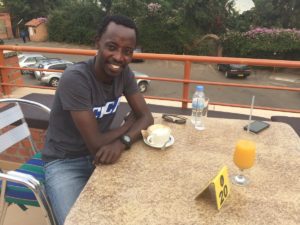Nestled in the corner of a white-walled room in North-East Ohio, a small shelving unit made of detachable plywood boxes stacked cockeyed contains colorful, unique bags, laptop cases, and pencil pouches. Keyboards clack and mouses click as students glaze over screens bearing WordPress, InDesign, and various word processors or spreadsheets. One group of students package these same colorful bags and jewelry into grey plastic shipping pouches. A young, wild-haired man bounces around the room  from group to group, answering questions and helping them acquire needed resources, all in a fashion very different from a typical teacher stereotype. Believe it or not, this is in fact a classroom and the apparent chaos these students are engaged in is part of their curriculum. This is Shya Designs, the crown jewel of the Cuyahoga Valley Christian Academy (CVCA) School of Business and Entreprenership (SOBE) program.
from group to group, answering questions and helping them acquire needed resources, all in a fashion very different from a typical teacher stereotype. Believe it or not, this is in fact a classroom and the apparent chaos these students are engaged in is part of their curriculum. This is Shya Designs, the crown jewel of the Cuyahoga Valley Christian Academy (CVCA) School of Business and Entreprenership (SOBE) program.
Five years ago, CEO of Valmark Financial Larry Rybka, traveled to Rwandan and encountered a group of widows of the Genocide who created these beautiful handcrafted bags to support themselves and their children. Because of his ties to CVCA, Rybka brought several hundred dollars worth of the product to the SOBE chair, Eric Ling (the aforementioned “young, wild-haired man”) to see if there was any way his students could get involved. Thus, Shya Designs was born. Shya Designs is a non-profit business that imports, markets, and sells handcrafted Rwandan bags made by widows of victims of the Rwandan Genocide. This allows these women to be self-sufficient and send their children to school. Because Shya Designs is completely student-run, it allows us to have an incredible hands-on business learning experience, while dramatically impacting the lives of women halfway across the world. This program, started by student entrepreneurs supports women entrepreneurs in an mutually beneficial partnership. Since this non-profit began five years ago, because of increased sales in the United States, the Rwandan co-op has been able to hire three more women to their team. This is three more families provided for and three more sets of children now able to attend school.
Because seniors in high school don’t stay that way forever, Shya Designs is a legacy business. Every year, the up and coming junior interview for roles like CEO, CMO, Director of Public Relations, as well as many others. The seniors choose their successors, and thus the business lives on through this changing of hands. This win-win relationship is not only a creative solution to a problem, but one that has proven year after year to be successful!




